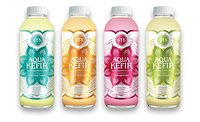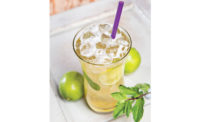Although ginger is a perennial that produces narrow green leaves and yellow flowers, the plant has gained more recognition for its root. The ingredient found favor as a spice, however, its association with medicinal characteristics has helped proliferate its usage, according to experts.
“Ginger’s medicinal history oftentimes influences consumers’ perception that the beverage is healthy and provides functional benefits,” says Megan Trent, marketing representative with Gold Coast Ingredients (GCI), Commerce, Calif. “As a result, this can influence purchasing behavior. For example, ginger is commonly known to help with anti-inflammation and ‘stomach problems’ such as upset stomach and motion sickness.
“These functional benefits may cause consumers to be more likely to purchase a beverage that contains ginger over one that does not,” she continues. “Therefore, companies that are trying to increase sales might innovate by adding ginger to their beverage products.”
Mukul Juneja, director of product experience marketing for Chicago-based Archer Daniels Midland (ADM), also notes how ingredients like ginger have benefited from its taste and perceived health benefits.
“Ingredients that serve holistic or multiple purposes (e.g., herbs, spices, etc.) are popular for beverages because they contribute flavor and may also provide some health benefits,” Juneja says. “Ginger, known as ‘adrak’ in India, has been used for a long time in the traditional ‘masala chai’ recipes. It’s believed to relieve pain, symptoms of [a] cold and digestive issues. Tea was one of the first categories in the U.S. to embrace ginger, but now you see many different drink formats leveraging this ingredient such as craft sodas.”
Juneja adds that the ingredient’s natural positioning also has resonated with consumers.
As of late, ginger has exemplified its versatility within beverage formulations as the spice has proliferated across traditional and emerging beverage categories.
“Many fresh beverages are utilizing ginger as an ingredient,” GCI’s Trent says. “Ginger is popular in tea, juices, smoothies, lemonades, sodas, spritzers, cocktails (Moscow mules, Margaritas, mojitos) and other alcoholic beverages with vodka, kombucha, sangria, gin, bourbon [and] whiskey.”
Noting that Moscow mules were on-trend in 2016 for cocktails and ready-to-drink (RTD) alcohol beverages, Trent says the trend also gave way for updated takes on the drink.
“This cocktail has impacted consumer awareness of ginger and demand for ginger-flavored beverages,” she says.
Describing ginger as an ingredient that adds a unique, tangy, spicy kick that also has subtle wood flavor notes, Trent notes that ginger’s versatility also expands to other flavor pairings. She adds that experimentation from beverage producers within alcohol and non-alcohol products have resulted in a plethora of flavor combinations with ginger.
“Ginger pairs well with a wide variety of beverage flavors including lemon, lime, peach, fresh mint, honey, green tea, chocolate, carrot, coconut, orange, watermelon, mango, apple, pear, pomegranate, pineapple and blackberry,” she says.
ADM’s Juneja adds that ginger’s amalgamation with other flavors and spices can depend on the market or beverage category. “Ginger-peach used to be one of the most common flavor combinations in tea,” Juneja says. “In Eastern cultures, it is also commonly combined with other spices such as cardamom and cloves.”
However, when working with spicy ingredients like ginger, a well-balanced approach is necessary, experts note.
“It is important to find the right balance so the ginger note is well-rounded [and] in harmony with the rest of the ingredients and flavors,” Juneja says. “It is easy to get to a level that is too spicy.”
Yet, with all the innovation surrounding ginger, GCI's Trent suspects that the ingredient has nearly reached its peak. However, she still expects ginger will be a staple within the U.S. beverage market. “Innovative producers have tried new ginger beverages and flavor combinations,” Trent says. “However, we think ginger will remain as a key flavoring ingredient for many years to come.”
ADM’s Juneja also expects ginger and other spices to fare well in the future. “Ingredients such as ginger and turmeric will likely increase in popularity as consumers in the Western hemisphere look to Eastern cultures to find inspiration to make products simpler and healthier without compromising on taste,” Juneja says. BI




